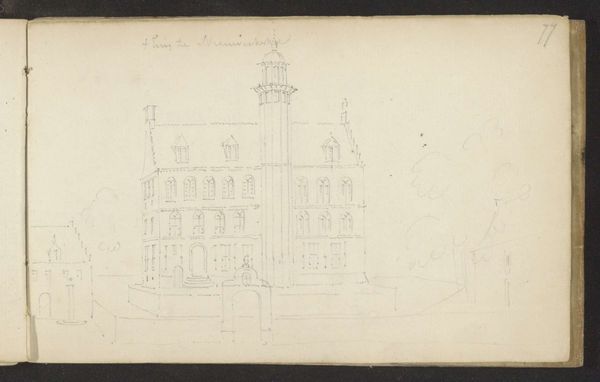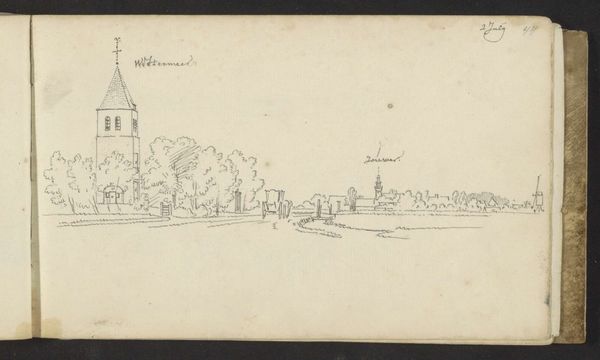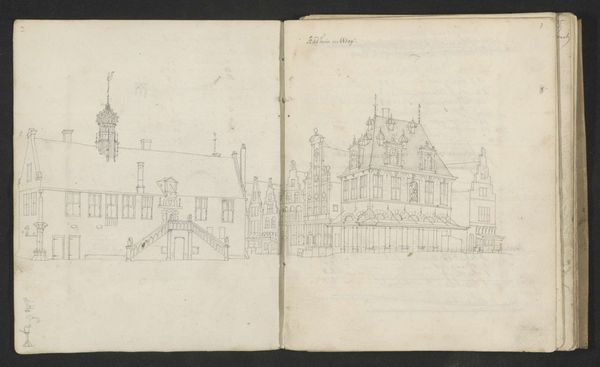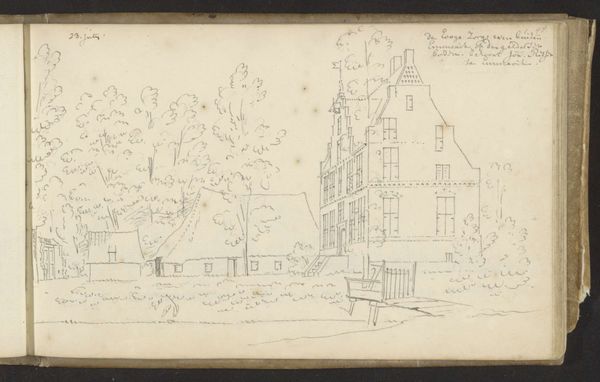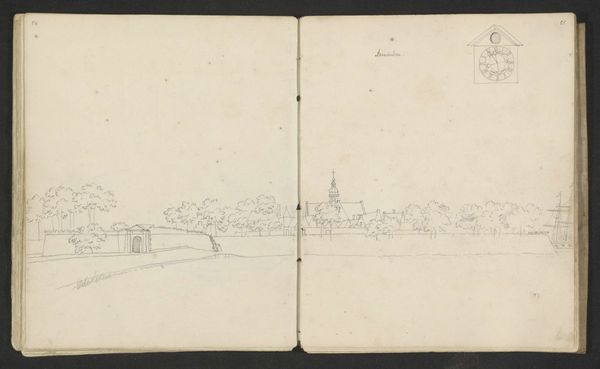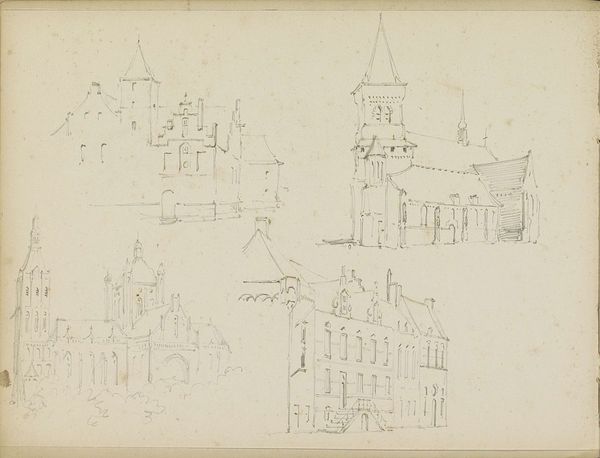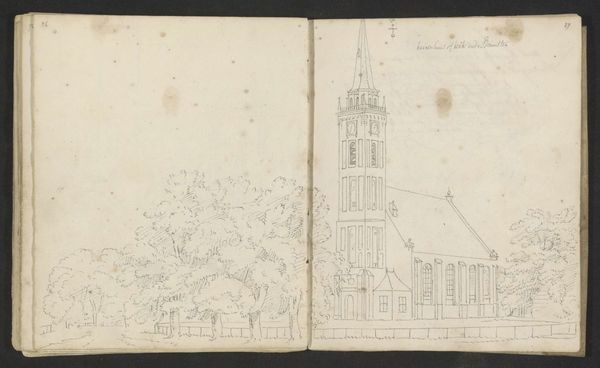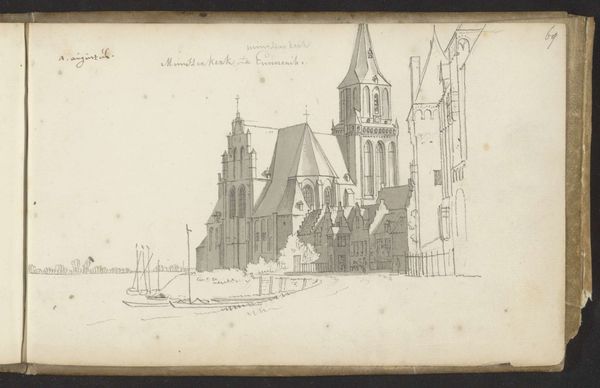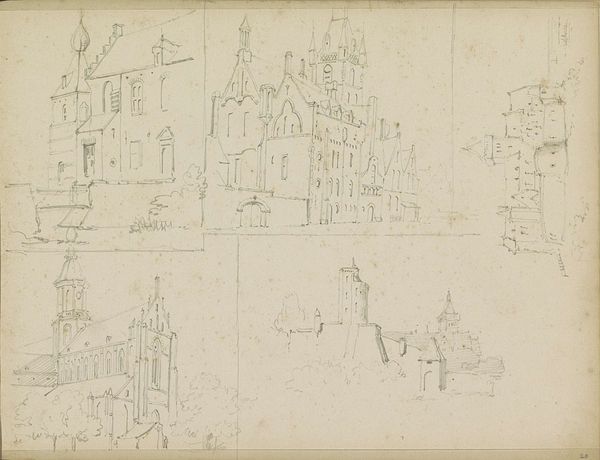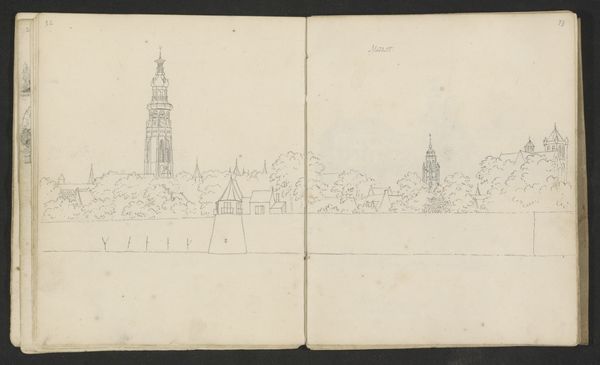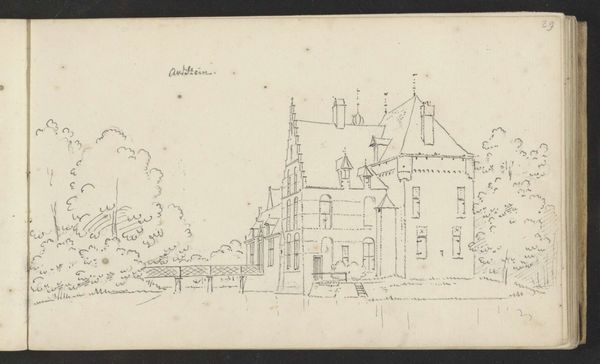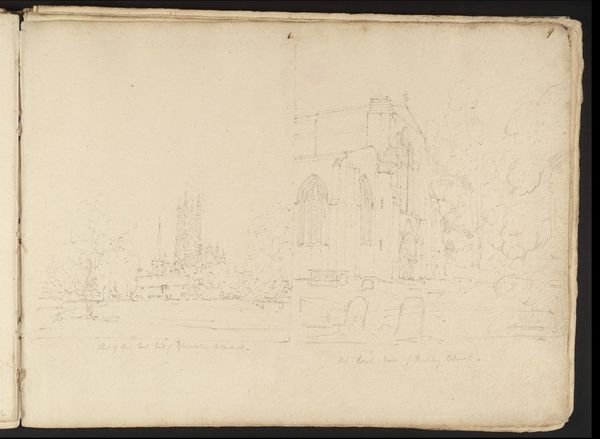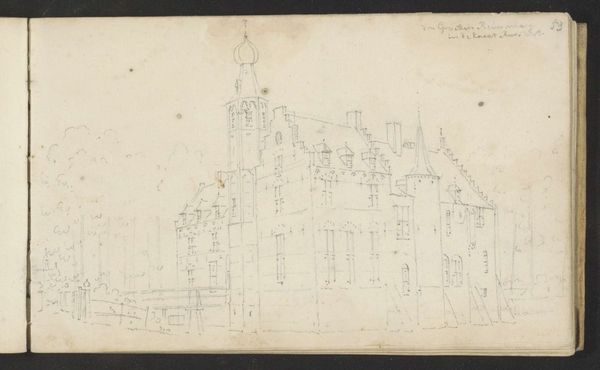
drawing, paper, pencil
#
drawing
#
dutch-golden-age
#
landscape
#
paper
#
geometric
#
pencil
#
cityscape
Copyright: Rijks Museum: Open Domain
Editor: Here we have Cornelis Pronk's "De Doelen te Dordrecht," a pencil drawing on paper, circa 1728-1732. The muted tones and architectural focus give it a rather austere feeling, wouldn't you agree? What's your take on this cityscape? Curator: Indeed, it presents a reserved facade, typical of Dutch Golden Age restraint. However, I wonder if this apparent austerity obscures a commentary on the distribution of power within Dordrecht at that time. Cityscapes, particularly those rendered with such precision, often function as assertions of civic pride and control. Editor: Interesting. I hadn’t thought of it in terms of power dynamics. Curator: Consider who would have commissioned or purchased such a drawing. What narratives might they have wished to project about their city and their own place within it? It's a controlled, almost clinical, depiction. Is it a neutral record, or a carefully constructed representation of dominance? And who is conspicuously absent from this drawing? Editor: Ah, I see what you mean. There are no people populating this scene. It's almost… vacant. Curator: Precisely. And what does that emptiness signify, especially when placed in the context of a bustling port city during a time of intense global trade and exploitation? Doesn't the visual absence prompt us to reflect on the invisible labor and hierarchies that undergirded this seemingly placid urban landscape? Editor: It certainly changes how I see the work. It is not just a straightforward depiction, but an artifact of a specific cultural and social order. Curator: Exactly! Art doesn't exist in a vacuum. Exploring these layers of context allows us to grapple with the complex power structures encoded within seemingly simple images. Editor: I will definitely keep that in mind. Thanks for sharing this insight.
Comments
No comments
Be the first to comment and join the conversation on the ultimate creative platform.
